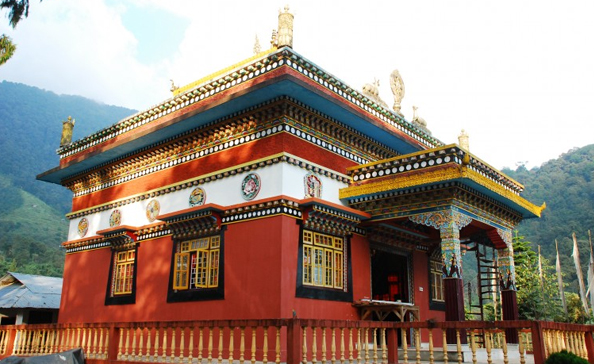Top Tourist Destinations in Yuksom, Sikkim That You Must Visit Once
The Lamas came from Sikkim to establish the Tibetan Buddhist order of Nyingmapa. The word "Yukshom" has its literal meaning as "the meeting-place of the three Lamas." In 1642 AD, Sikkim Phuntsok Namgyal's first king was historically consecrated here at the same place as the majestic Norbughang Stupa.
It is located in the lap of the Himalayan Mountains and is located at a height of 1780 m. On a Yuksom tour, tourists can go hiking in Mount Kangchendzongha and have a drink of bamboo and enjoy the wildlife sanctuary.
1. Tashiding Monastery
The Monastery of Tashiding reflects an ancient world charm, a calm atmosphere ideal to seek light and spirituality. The monastery connects visitors to the attractive and snowy architecture of the great mountains. It's not to be missed by tourists, along with being one of the oldest Buddhist monasteries in Sikkim. The Tashiding Monastery was built in the 17th century on a mountain between Rangit and Rathong, two beautiful rivers and belongs to the Nyingmapa order. The people who seek forgiveness and will to repent are thought to be purging every sin in this popular monastery. Tashiding Monastery is a must-visit to Bhumchhu, its Festival, a holy water ceremony celebrated joyfully in the Tibetan calendar on the 14th and 15th day of the first month. The shrine is surrounded by fluttering flags of prayer and holy stupas, built for the devotees' spiritual benefit. Nowadays there are about 60 to 70 monks in this monastery.
2. Khangchendzonga National Park
National Park Khangchendzonga is a UNESCO World Heritage Site covering an area of 1784 sq km. It's known for its spectacular wildlife, where exotic animal species like Red Pandas, Snow Leopards, Great Tibetan Sheep, Bharal, Musk deer, etc. can be observed. There are also a number of species of birds, including Black-Necked Crane, Grus nigrocolis, Grey Peacock Pheasant, Blood Pheasant, Satyr Tragopan, Tibetan Snow Cock, or Himalayan Ski Cock. The park is also home to numerous bird species. Khangchendzonga National Park is famous for its massive size and consists of 18 glaciers, including Zemu Glacier. Moreover, over 17 alpine lakes and a view of 19 Himalayan mountain peaks, including the popular Mount Khangchendzonga, are also part of the National Park. In the buffer zone of the national park is also a sacred shrine called Tholung Monastery.
3. Coronation Throne of Norbugang
Norbugang Coronation Throne represents the place where Phuntsog Namgyal, the first Chogyal king, was crowned in the year 1642. The wall-like structure was erected later after the ceremony and named Norbugang Chorten that still marks the original site. The people who participated in the ceremony are believed to have offered a large number of treasures still buried under the Norbugang Chorten. This included the seats of the 3 Lamas and the King, a shrine that consisted of a huge wheel of prayer, a mystic pine tree that lands above the chorten, and the tranquil Kathok Lake, from which coronation waters were drawn. The footprint of one of the three lamas can also be seen, embedded in a rock in front of the throne of Kings. A rare collection of plants and indigenous trees is the beautiful garden around this historic site. The visitors stay here for a while and stroll silently on this picturesque piece of land.
4. Kartok Monastery
Kartok Monastery in picturesque Yuksom Village is one of three major convents in the town, Dubdi, and Ngadak Chorling Monasteries, with a smooth red structure decorative with golden, yellow contours and Tibetan design. The monastery is known to be one of three major monasteries. This monastery, decorated by colorful prayer flags and flanked by the beautiful Lake Kartok, is a popular destination of pilgrimage to Yuksom. The monastery's name was derived from a lama who was of enormous importance for the coronation of Sikkim's maiden ruler.
5. Tashi Tenka
Once a royal palace building on the ridge south of the town, Tashi Tenka has only now land that offers wonderful views of the area. To the south, the monastery of Rabdentse can be seen a little higher to the left of the monastery of Pemayangtse. Then look at a cloudy view over the smart Rathong Valley that flows between the high hills in the north. To the east, in the background of the wooded hills, one can see a perfect road to Tashiding, but then there is a stunning view of Khecheopalri to the west.












No comments